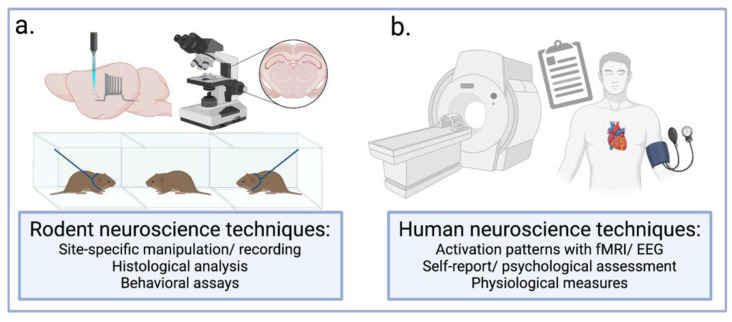Figure 1.
Techniques available for dissecting the neural underpinnings of behavior and emotion. (a) Rodent research is enhanced by the utilization of invasive techniques and behavioral assays that are not available for human use. Site-specific manipulations or recordings, such as chemogenetics, optogenetics, electrophysiology, pharmacological infusion, or viral knockdown, aid in determining the function of specific cellular populations. Post-mortem histological analysis allows for the visualization, segmentation, and quantification of neural substrates, including receptors and fibers, along with activity-induced protein expression. A wealth of assays have been developed to test for a range of behaviors and processes under experimentally controlled conditions, for example, the partner preference test (PPT) used to test the strength of pair bonds in prairie voles. Together, these techniques used in rodents allow for greater understanding of the neural mechanisms underlying processes such as pair bonding that can be translated to human work. (b) Research in humans involves less invasive techniques to dissect the neural networks underlying bonding. Neuroimaging through functional magnetic resonance imaging (fMRI) and electroencephalogram (EEG) allows for visualization of neural activity in response to experimentally-presented stimuli. fMRI and EEG can be paired with self-report, physiological, and psychological measures from subjects, providing further context for changes in neural activity captured through neuroimaging. Figure created with BioRender.com (accessed 4 June 2023).

